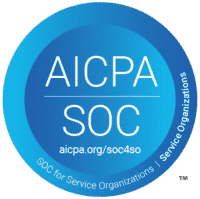Assessment is an essential component of the learning process, as it provides students with feedback on their progress and helps teachers understand the effectiveness of their teaching strategies. However, assessment can go beyond just measuring learning outcomes and can be used as a tool for learning itself.
Assessment as learning is a form of assessment that puts students in the driver’s seat, allowing them to take ownership of their learning and develop a deep understanding of the learning material. By actively engaging in the assessment process, students are able to reflect on their learning, identify areas for improvement, and set goals for future learning. This approach to assessment can help make the learning experience more authentic for students, as they are able to apply what they have learned to real-world situations around them and take responsibility for their own learning. Ultimately, assessment as learning can truly advance the way students develop the skills and knowledge they need to succeed not only in the classroom, but also in their future endeavours.
In order to guide educators to understand what good learning, teaching and assessment looks like, Jisc comes with their own principles of good assessment and feedback.

Jisc’s 7 principles of good assessment and feedback
- Help learners understand what ‘good’ looks like by engaging learners with the requirements and performance criteria for each task
- Support the personalised needs of learners by being accessible, inclusive and compassionate
- Foster active learning by recognising that engagement with learning resources, peers and tutors can all offer opportunities for formative development
- Develop autonomous learners by encouraging self-generated feedback, self-regulation, reflection, dialogue and peer review
- Manage staff and learner workload effectively by having the right assessment, at the right time, supported by efficient business processes
- Foster a motivated learning community by involving students in decision-making and supporting staff to critique and develop their own practice
- Promote learner employability by assessing authentic tasks and promoting ethical conduct
Implementing Jisc’s seven principles of good assessment and feedback with Portflow
Portflow is a student-owned portfolio that helps students take ownership of their own learning, while providing the adequate scaffolding on the route. Portflow enables institutions to implement assessment as learning within the digital learning environment, to make assessment more meaningful for students.
 Help learners understand what ‘good’ looks like
Help learners understand what ‘good’ looks like
Teachers, tutors or other academics can help students to understand what good looks like in various ways; e.g. by providing templates for the structure of portfolios, by describing and specifying learning outcomes within templates (goals), and by sharing examples and good practices of portfolio components.
 Support the personalised needs of learners
Support the personalised needs of learners
Portflow supports the personal needs of learners by offering them a place within the digital learning environment where they can manifest their ownership. In Portflow, learners can create multimedia evidence of learning experiences reflecting their personal learning journey for development, assessment and showcasing purposes. Students can also set goals that reflect learning outcomes or personal targets. In addition, students can organise and structure their portfolio through collections that can reflect learning contexts like modules, projects, internships etc. Diversity and inclusivity is supported by promoting individual strengths, competences, and preferences. This way, Portflow helps each learner to shine in a way that is most accessible and inclusive for them. Moreover, our customers experience Portflow as a very easy-to-use application requiring minimal explanation, making it very accessible. Furthermore, the version management of evidence as well as the progress valuations help to focus on ipsative feedback.
 Foster active learning
Foster active learning
Portflow fosters active learning by providing students with opportunities to learn from formative assessment. Feedback requests allow a student to engage with peers, teachers, tutors, or even people from the workplace at any time. The result is an ongoing flow of interaction that gives students more often and more equal opportunities to learn from valuable 360° insights and improve their learning. Furthermore, Portflow invites users to formulate their feedback requests, stimulating active preparation of feedback. Lastly, the feature to include audio-recorded feedback requires students to more actively process received feedback.
 Develop autonomous learners
Develop autonomous learners
Portflow helps students to become autonomous learners by giving students ownership of their own learning. The student is the one that is in control of their portfolio and learning process, e.g. by managing access, determining who, when and how to ask for feedback, setting goals and building the structure. However, we cannot expect students to become autonomous overnight. Therefore, teachers or tutors can provide students with the adequate scaffolding, e.g., through templates for goals or for the structure of their portfolio. Scaffolding can gradually decrease over time, depending on the student’s development, to foster autonomy and self-regulation. What is more, students are able to add reflections to their portfolio. These and all other components of the portfolio can be shared with their peers, enabling peer-reviews, supported by threaded discussions.
 Manage staff and learner workload effectively
Manage staff and learner workload effectively
By enabling students to request feedback easily from any stakeholder from their learning process, they are less dependent on the teacher as the single source of feedback. This means that the teacher’s workload is more balanced. Moreover, as a continuous feedback loop is enabled as well as a differentiation in low-, intermediate- and high-stakes forms of assessment, the intensity of teacher investment is also balanced out across the learning process. By opening up the portfolio for unsolicited feedback, the student is able to have more evenly distributed opportunities to learn from valuable insights. Lastly, as Portflow is an integral part of the VLE, tightly integrated via LTI and API standards, the learning artefacts from the VLE can easily be incorporated into portfolios and end-users will experience the entirety of Portflow within their VLE as a whole, making processes much more efficient and manageable.
 Foster a motivated learning community
Foster a motivated learning community
Students are often treated as consumers of their education, rather than as active participants. This inhibits students’ (intrinsic) motivation to learn. Portflow helps make education more personalised, flexible and self-directed by providing students with choices in how they learn and what assessment technique they use. It stimulates students to become the director of their own learning and to take responsibility. Also, staff, teachers and other academics are able to build their own portfolios which they in turn can share with their peers as well as their students.
 Promote learner employability
Promote learner employability
Portfolios are particularly suited to facilitate authentic learning and assessment. Portflow promotes learner employability through enabling authentic assessmfent of students’ skills, knowledge and behaviours. In a portfolio, students can flexibly create and track the progress of learning activities that are non-linear and reflect real-life situations. It provides a digital record of learning outcomes, in future even encompassing badges and other micro-credentials. Furthermore, Portflow enables students to append personal goals that they deem relevant for their future careers. In these ways, students are stimulated to develop employability skills.
Ferrell, G., Knight, S. (2022). Principles of good assessment and feedback. Jisc. Retrieved from https://www.jisc.ac.uk/full-guide/principles-of-good-assessment-and-feedback



